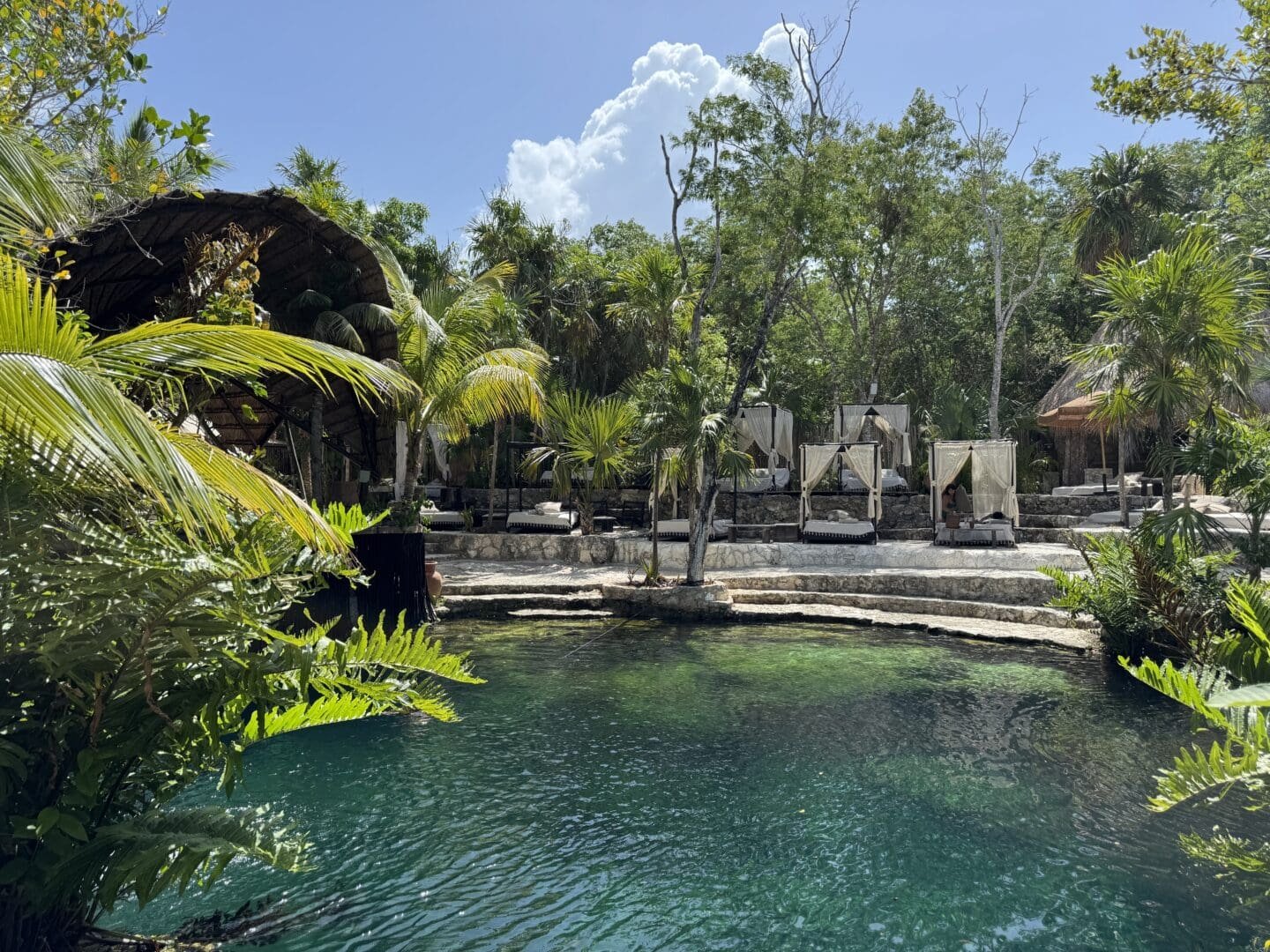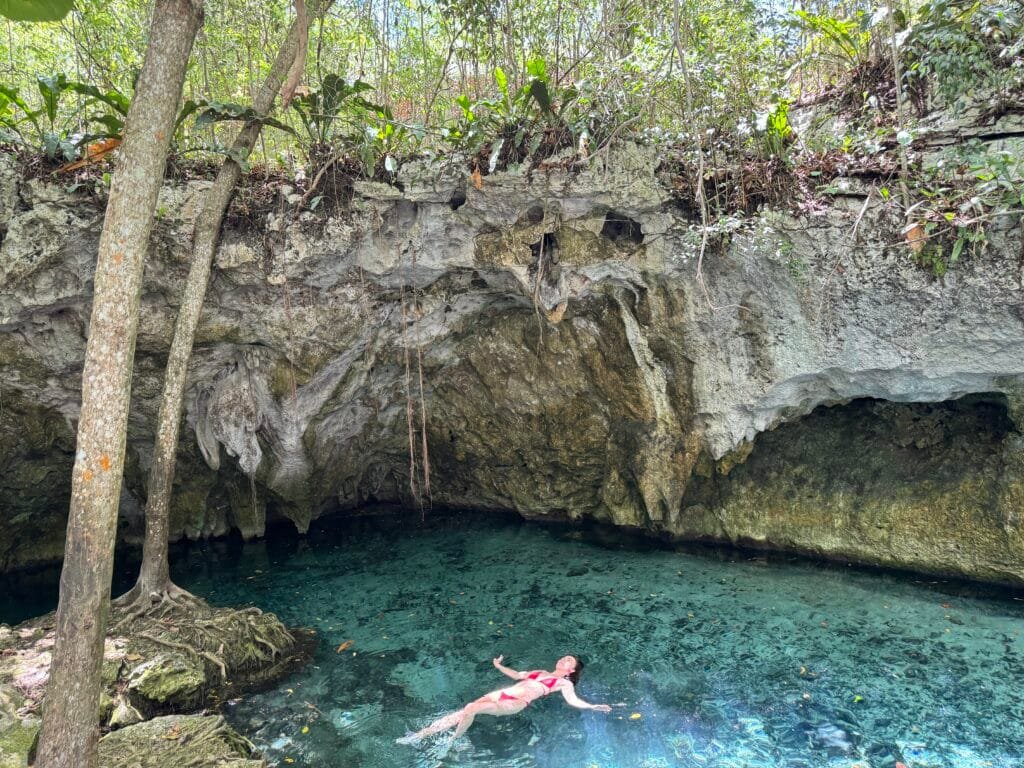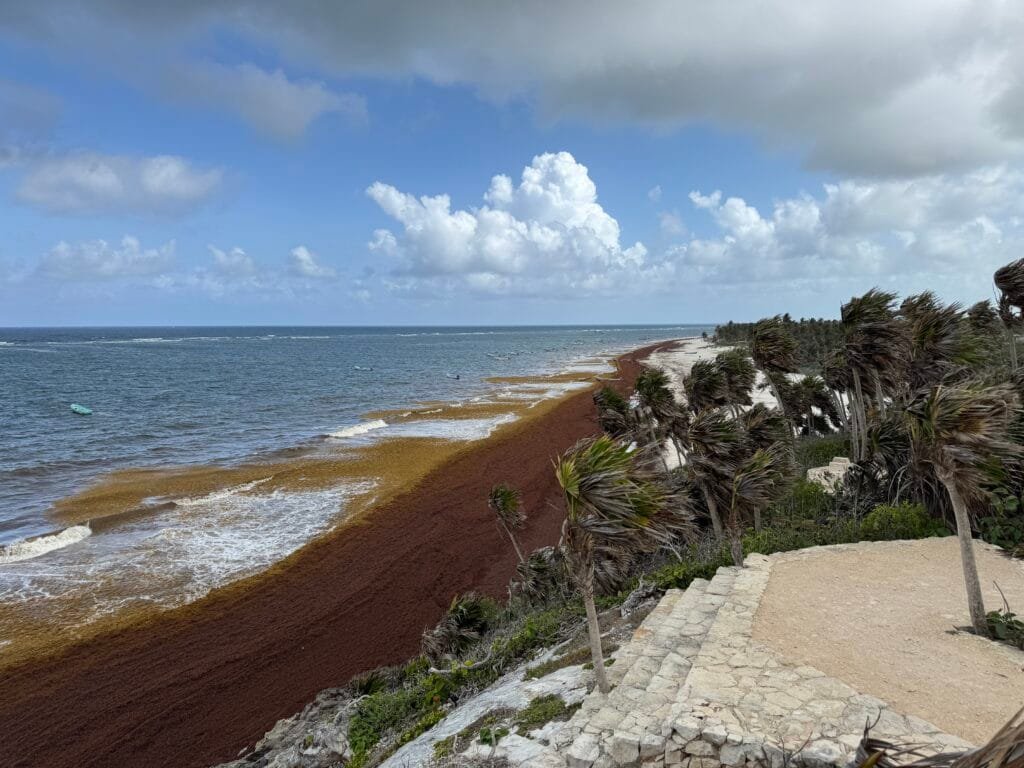
Table of Contents
Visiting Tulum in the Low Season: Everything You Need to Know
Tulum, Mexico is a year-round paradise, but the experience can vary significantly depending on when you go. If you’re considering visiting Tulum in the low season—typically June through August—you’re in for a very different (and potentially more rewarding) adventure.
Here’s everything you need to know before booking your trip to Tulum during the off season.
When Is Tulum’s Low Season?
Located close to the equator, Tulum enjoys warm weather all year. Here’s a breakdown of the seasons:
- Peak Season (November–March): Dry weather, low humidity, tons of events, and large crowds.
- Shoulder Season (April–May & September–October): Fewer crowds, mild temps.
- Low Season (June–August): Highest humidity, seaweed season, and hurricane risks—but also the best prices and fewest crowds.
I visited Tulum in June and, as someone who’s traveled to tropical destinations during their rainy season, I found the trade-off to be worth it. Despite some rain in the jungle, we only got caught in one quick storm while exploring Jaguar Park. It was actually refreshing in the heat and humidity.

Pros of Visiting Tulum in the Low Season
✅ Fewer Crowds = More Serene Experiences
One of the biggest perks of traveling during the low season is the lack of crowds. Cenotes that are usually packed were practically empty. It felt like a private experience at every turn.
While some cenotes offer lockers for a fee to protect your belongings, others do not. Therefore with only us and a couple of other people around, it made it far less stressful to just leave our stuff at the edge versus if the cenote was packed.
Even our scuba diving tour felt exclusive—just me, my friend, the instructor, and her sister. No big groups, just pure, intimate adventure and attention.

✅ Lower Hotel Prices
Tulum is not cheap, but in the low season, you get luxury for less. We booked a beachfront stay at Kanan Tulum for $250/night through Expedia—a room that goes for as high as $700 in peak season.
Whether you’re into boutique hotels, beachfront resorts, or city-center hostels, the low season opens the door to better deals.

✅ Less Traffic in the Hotel Zone
The infamous traffic in Tulum’s Zona Hotelera didn’t live up to the hype—thankfully. We never spent more than 20 minutes commuting to the city center, and parking was easy to find in town. A major win if you’ve read the traffic horror stories online that strongly suggest renting a bike or scooter to bypass the clogged streets.
✅ Better Bargaining Power
Taxis in Tulum don’t use meters, so you have to negotiate the fare before getting in. And low season = more room to haggle. My friend Jasmine scored us a ride for $15 USD with her incredible haggling skills when the first few drivers tried to charge us $40 USD for just 2.3 miles after the full moon party at Papaya Playa Project, claiming it was the going rate. In high season, you might be able to shave off a few dollars at best, but with loads of taxis just waiting on the side of the road, it’s a buyer’s market.
*Also side note / mini rant / money saving tips: I’m sorry, but $40 USD is unacceptable in any season, in any country for just over a 2 mile drive. Since Ubers are illegal in Tulum thanks to what is referred to as the “Taxi Mafia,” rates are surprisingly high even in the low season.
Be sure to rent a car if you are comfortable with it and limit taxi use to when you plan on going out drinking. Booking a slightly more expensive hotel that is walking distance to clubs and restaurants where you plan on going out also may save you more money than staying at a cheaper hotel further away.
Cons of Visiting Tulum in the Low Season
❌ Minimal Party Scene
Tulum is known for its party scene, but in summer it’s a different story. Many beach clubs are quiet, with music echoing to empty loungers. Top rated restaurants like Casa Jaguar felt eerily empty. That said, we still found some life at places like Ilios, Gitano, and Papaya Playa Project—you just need to ask around for the “one” party happening that night. In the winter, as I have been told, every hotel, restaurant, day club and night club is pouring with people.
The silver lining, though, is that some places waived their cover fee just to get us to go inside.

❌ Seaweed (Sargassum) Season
One major downside? Sargassum seaweed, which washes up in massive amounts during the summer due to the trade winds. In June 2025, it was at a record-breaking high due to climate change, making swimming in the ocean nearly impossible with tons and tons of brown seaweed clogging up the shores.
Locals told us it usually begins in April and peaks in June—but this year it started as early as February. The seaweed situation is worsening year by year with global warming, so it’s something to seriously consider if beach time is a priority for your trip.
In previous years, cleanup crews were able to keep up with the amount of seaweed. Now, despite seeing them with shovels and wheel barrows and even bulldozers every morning, the ocean keeps dumping immense loads of more seaweed.
Luckily, Tulum is full of crystal-clear cenotes that offer a refreshing escape when the beach isn’t an option.

So, Is Tulum Worth Visiting in the Low Season?
It depends on what kind of experience you’re looking for.
- Go in summer if you want peace, privacy, and affordability—and don’t mind skipping beach parties or swimming in the sea.
- Choose winter if you’re after the full social, ocean, and nightlife experience Tulum is famous for, and you’re okay with higher prices and bigger crowds.
For me, the low season offered a more relaxed and personal version of Tulum. It was different than expected—but absolutely worth it.

